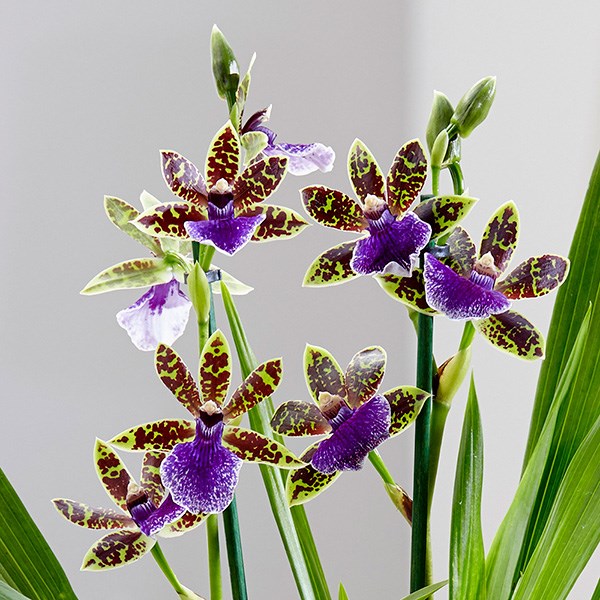Zygopetalum Trozy Blue is a stunning, tender orchid which is more suited to the enthusiast rather than the amateur as it is not quite as easy to care for as the more readily available Phalaenopsis orchids, but definitely worth a try if you are a little more experienced.
Originally Zygopetalums are native to Brazil, the Guianas, Venezuela and Columbia, hence they require a temperature of around 15-24C or 59-75F. They are evergreen epiphytic orchids, growing in the crooks of tree branches and absorbing their water from the air through aerial roots.
They bear their wax like blooms in autumn or early winter. The slender petals contain a mix of green, plum and purple-blue producing a quite extraordinary effect that will be admired by all who view them. The flowers exude a sweet scent early in the morning. The foliage often has black streaks and spots.
The plants prefer bright light, but should be protected from direct sunlight, especially in spring and summer. The roots are quite happy to be a little overcrowded in the pot so will not need repotting on a regular basis. If the plant begins to suffer and must be repotted, use a specialist orchid compost. Sit the pot once a week in a tray or sink of shallow water for 15 minutes so they can soak up as much as they like, then leave it to drain thoroughly before placing it back in its usual location. Feed fortnightly with a specialist orchid feed. Occasional misting will help raise humidity. Propagation is probably best left to the professional nurseryman, but you can divide plants leaving at least three pseudobulbs per division.
This exciting variety is quite an unusual one compared to my normal recommendations, and perhaps a little more specialist. However I feel a good proportion of you will cope admirably with it’s care and it will be a real talking point for all who visit your home. Perhaps you might like to purchase one as a gift for an avid gardening friend or family member. If you would like to try your hand with this plant there is an opportunity below.
To view this plant at Waitrose Garden click here
If you have enjoyed reading our blog post then why not fill in the form provided to allow us to send you our blog posts and newsletters by email.
Mark Snelling
All images copyright Waitrose Garden.


